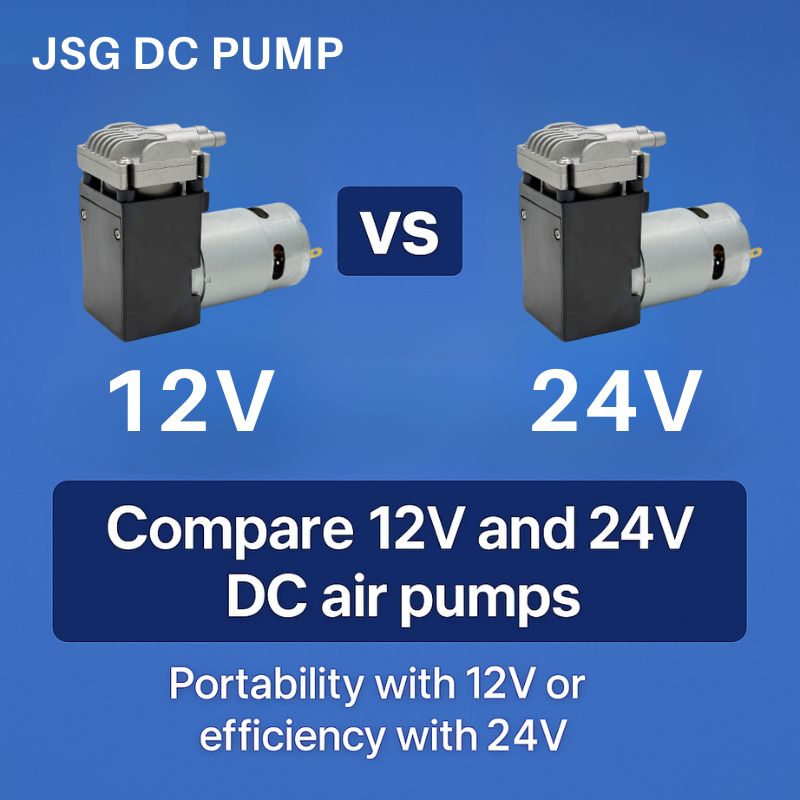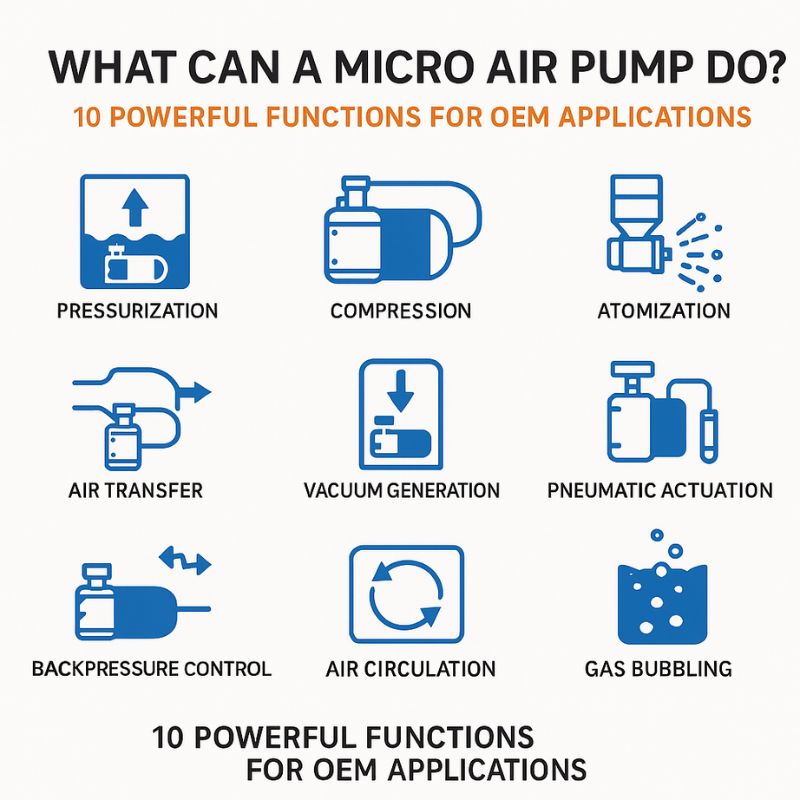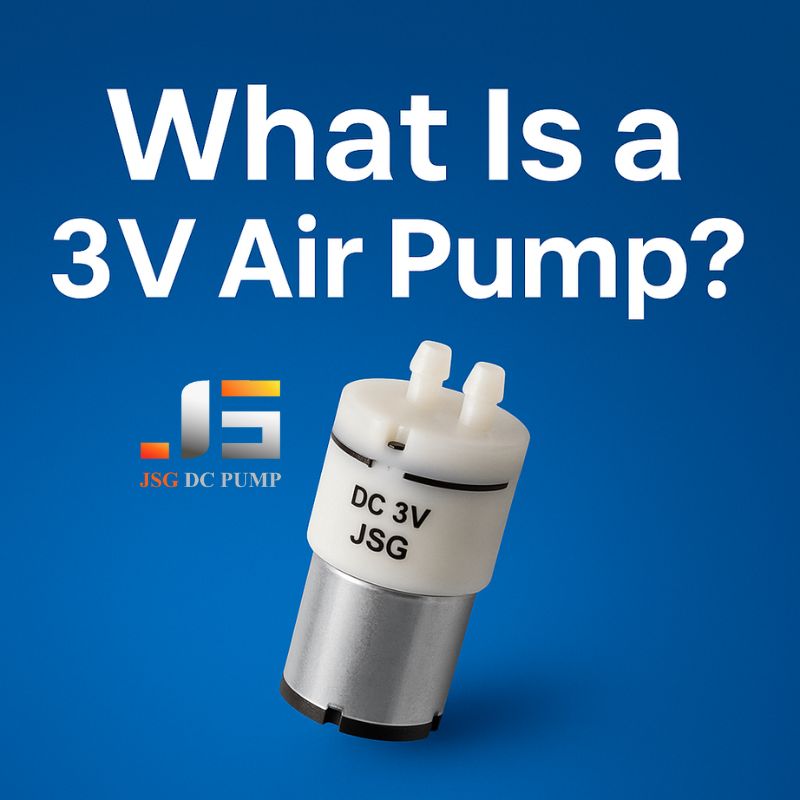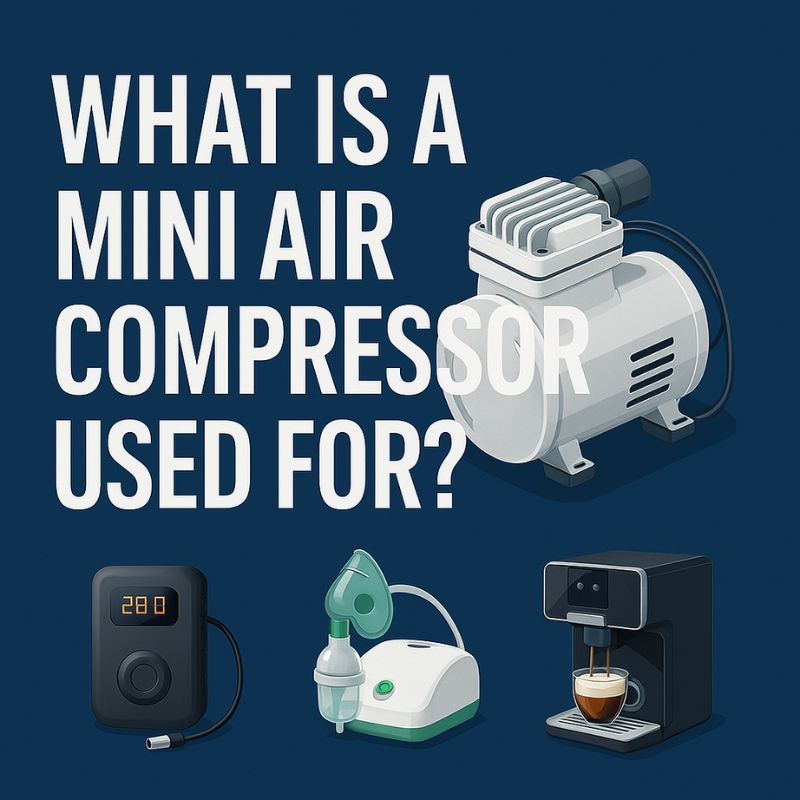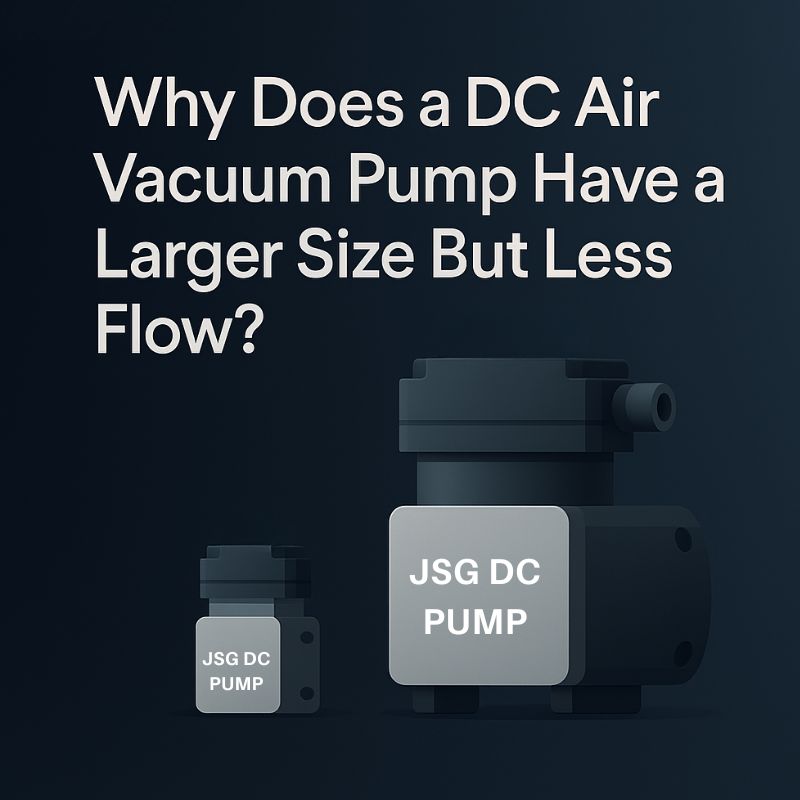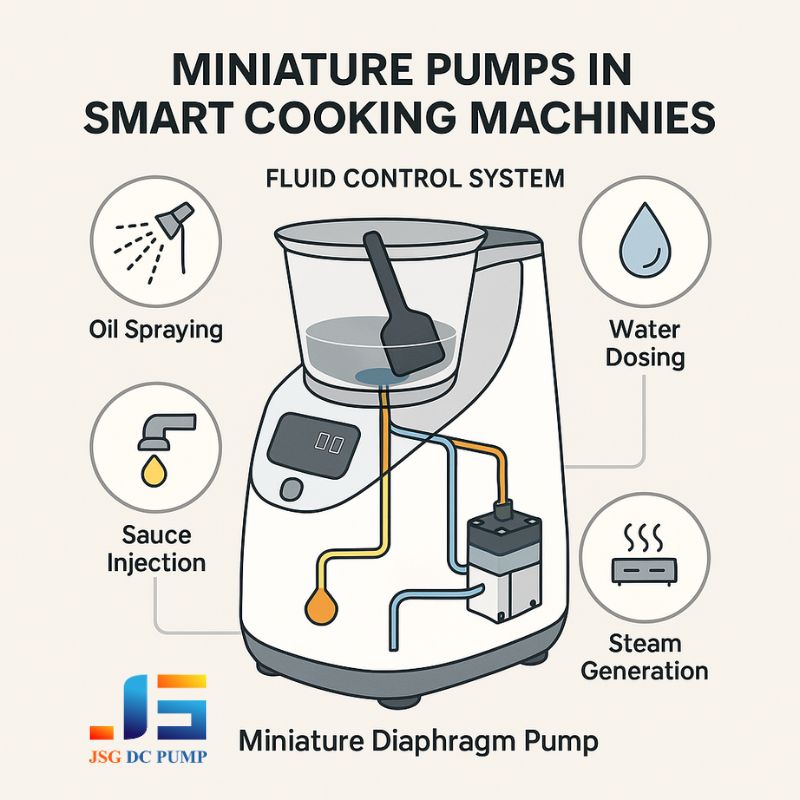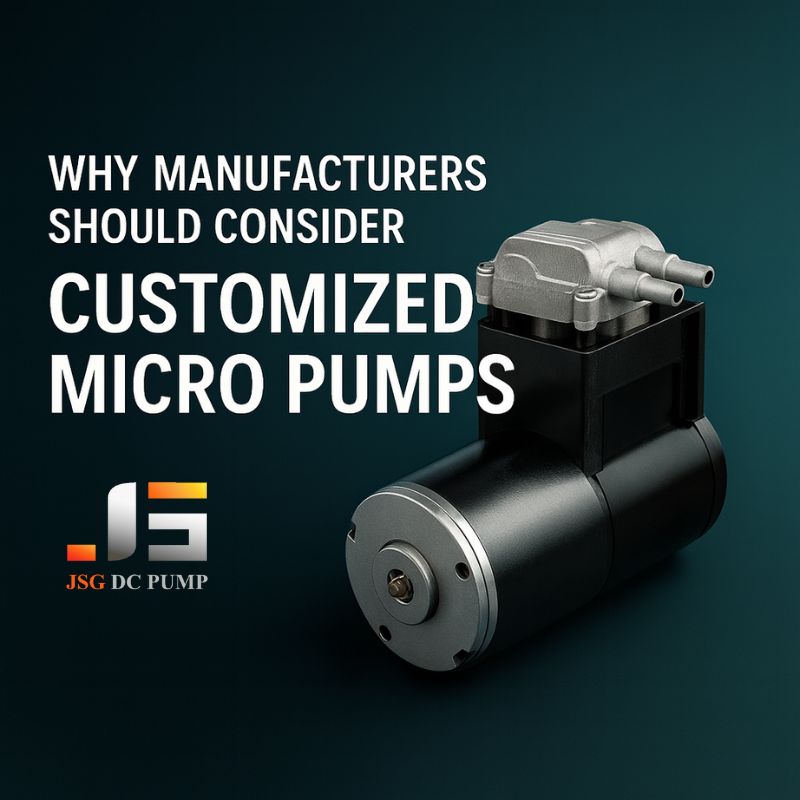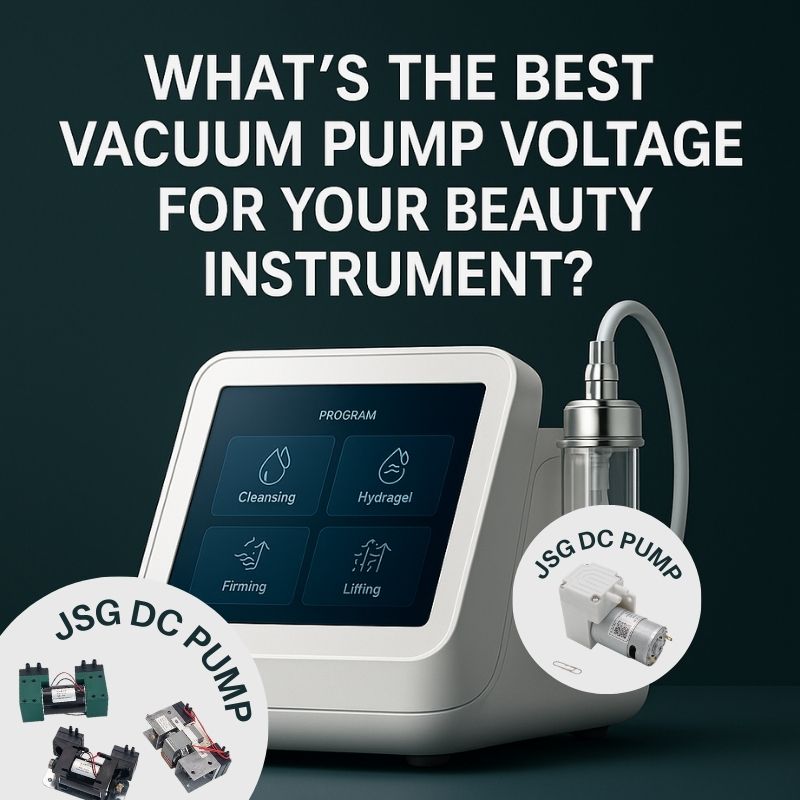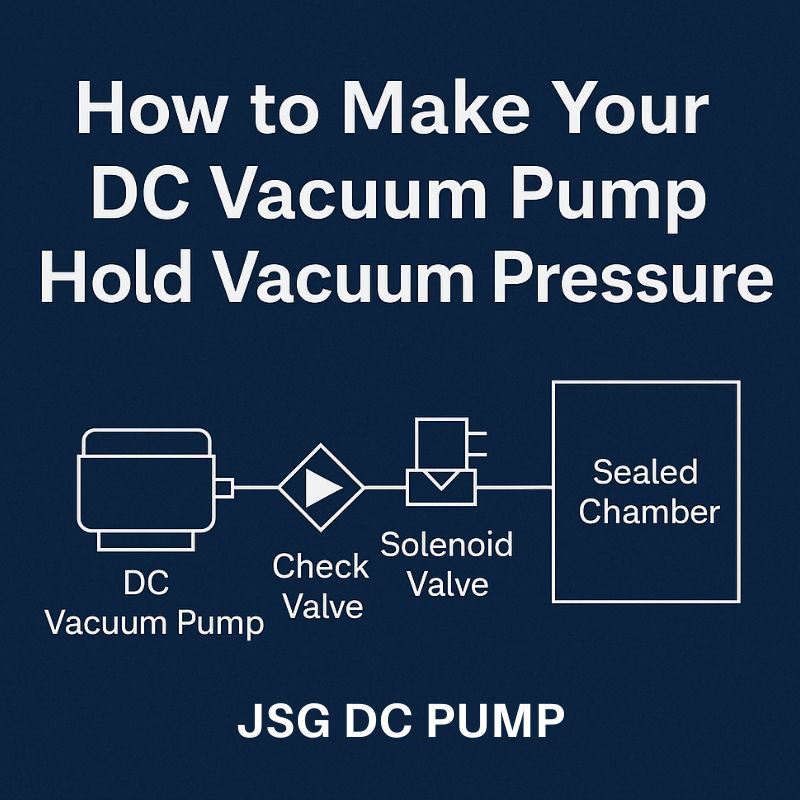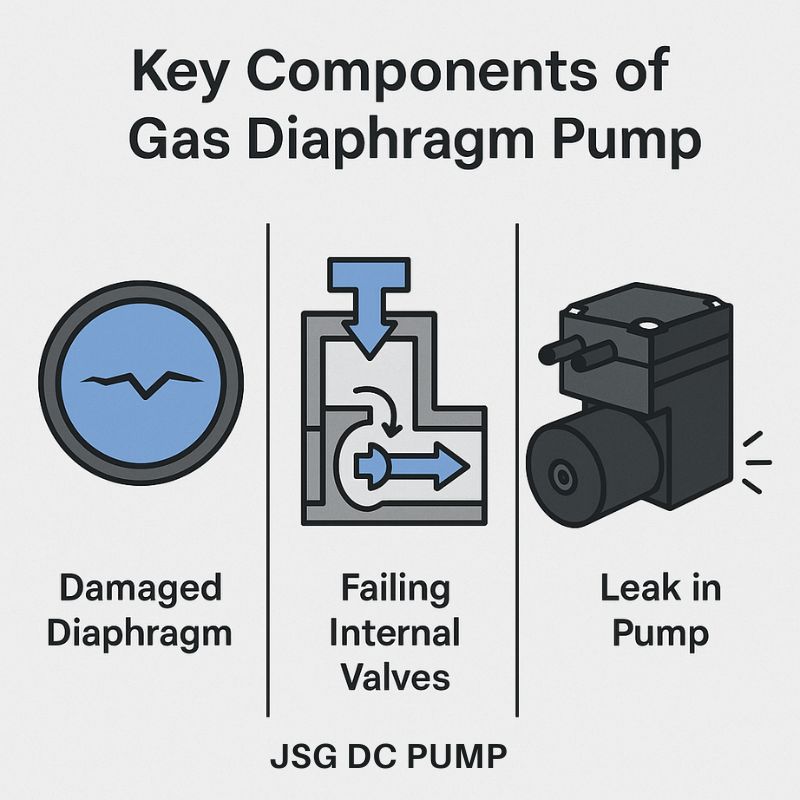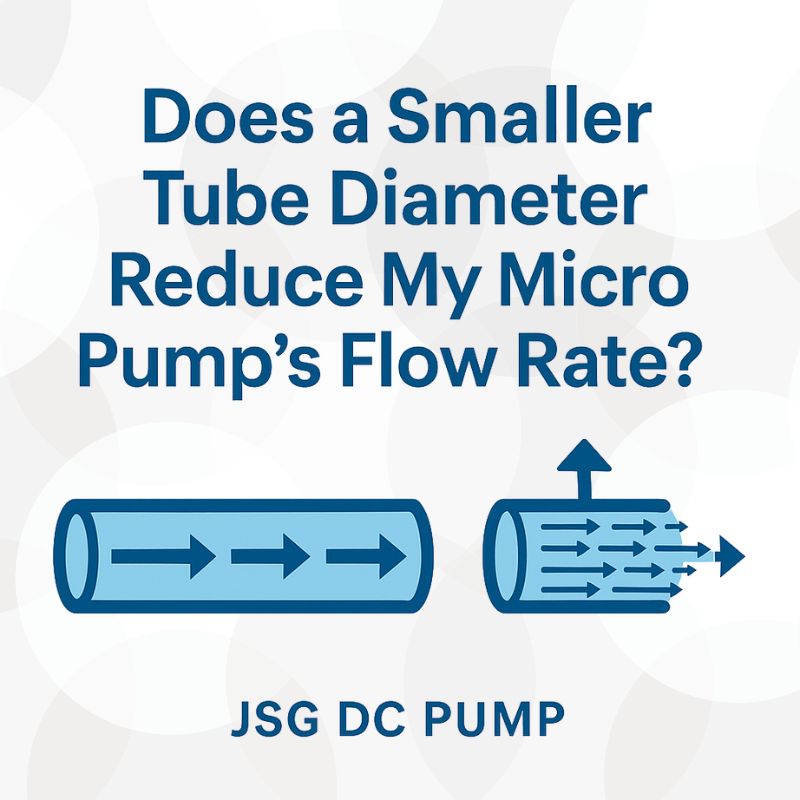You’re designing a system and need to pick a DC air pump. You see options for 12V and 24V, but the choice feels arbitrary. Making the wrong decision could lead to oversized power supplies, inefficient wiring, or even poor pump performance down the line.
The best voltage depends on your system’s power source and efficiency needs. 24V pumps are more efficient, run cooler, and allow for thinner wiring by drawing half the current for the same power. 12V pumps are ideal for portable, battery-powered systems using common automotive power standards.
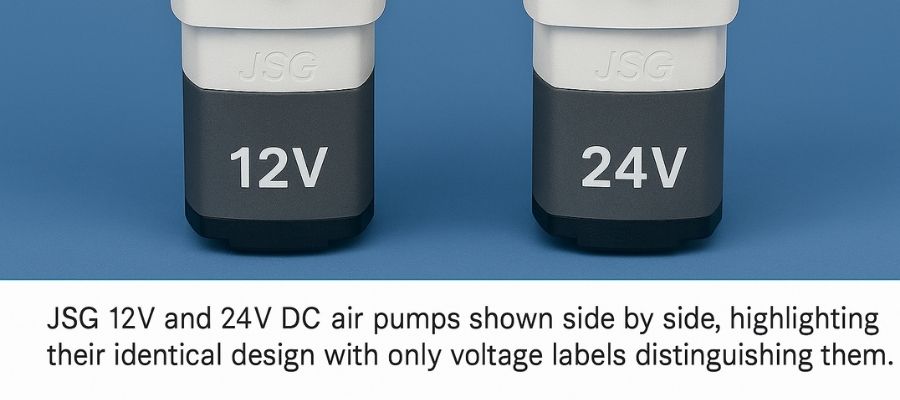
I get this question almost every week from engineers. Many assume that if the performance specs—like pressure and flow rate—are the same, the voltage doesn’t matter much. But as someone who has been designing and integrating these pumps for over 22 years, I can tell you that voltage is a fundamental design choice. It affects everything from the thickness of your wires to the overall efficiency of your product. Let’s break down the practical differences so you can choose with confidence.
What Is the Real Difference Between 12V DC Air Pumps and 24V DC Air Pumps?
You see two pumps with identical performance ratings, but one is 12V and the other is 24V. This makes the choice confusing, as the benefit of one over the other isn’t immediately obvious.
For the exact same power output, a 24V pump draws half the amperage (current) of a 12V pump. This is the core difference that influences wire size, heat loss, and overall system efficiency.
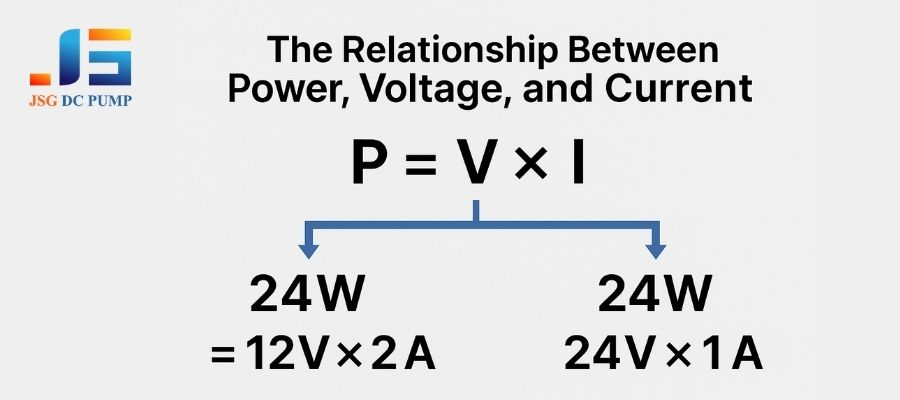
To understand this, we just need to look at a basic electrical formula: Power (Watts) = Voltage (Volts) x Current (Amps). Let’s imagine you need a pump that delivers 24 watts of power. A 12V pump will draw 2 Amps (12V x 2A = 24W), while a 24V pump will draw only 1 Amp (24V x 1A = 24W). They both do the same amount of work, but the 24V system moves the energy more efficiently. Current is what stresses your electrical system. More current requires thicker wires and generates more heat.
The energy lost as heat in wires is calculated by P(loss) = I²R (Current squared times Resistance). Because the current is squared, its impact is huge. The 1 Amp current in the 24V system will generate only one-quarter of the wasteful heat of the 2 Amp current in the 12V system.
| Pump Specification | 12V DC Pump | 24V DC Pump | Key Takeaway |
|---|---|---|---|
| Power Output | 24 Watts | 24 Watts | Performance is identical |
| Current Draw | 2 Amps | 1 Amp | 24V pump uses 50% less current |
| Relative Heat Loss | 4x (High) | 1x (Low) | 24V system is far more efficient |
When Should You Choose a 12V DC Air Pump?
Your project is portable and battery-operated. You need a reliable power solution that is common and easy to integrate, without complicating your design or supply chain.
Choose a 12V pump for portable devices or any system powered by standard automotive-style batteries. The 12V electrical standard is globally ubiquitous, making power supplies, batteries, and compatible components easy and cheap to source.
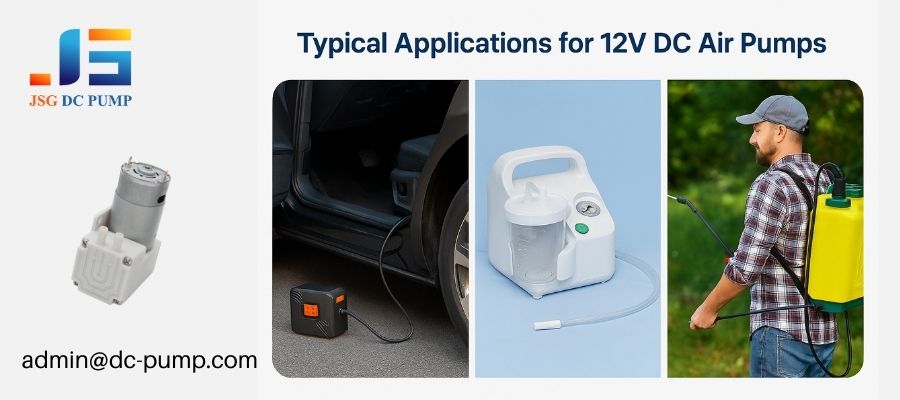
The biggest advantage of the 12V standard is its universal availability. Every car in the world runs on a 12V system, which has created a massive ecosystem of compatible parts. If your product needs to be plugged into a vehicle or use a standard lead-acid or Li-ion battery pack, 12V is the simplest and most direct path.
For short wire runs and applications where portability is the top priority, 12V is often the right engineering choice, even with its lower electrical efficiency.
Ideal Use Cases for 12V Pumps:
- Portable Automotive Accessories: Tire inflators, coolers, or vacuums designed to plug into a car.
- Emergency Medical Equipment: Portable aspirators or nebulizers used in ambulances.
- Battery-Powered Consumer Goods: Air mattress pumps, backpack sprayers, and other mobile devices.
When Is a 24V DC Air Pump the Better Choice?
You are designing a stationary industrial machine, a large medical device, or any system where efficiency and reliability are paramount. You have more control over the power supply unit.
Choose a 24V pump for industrial, medical, and laboratory equipment. The higher voltage allows for longer wire runs, smaller wire gauges, smaller power supplies for the same output, and greater overall electrical efficiency.
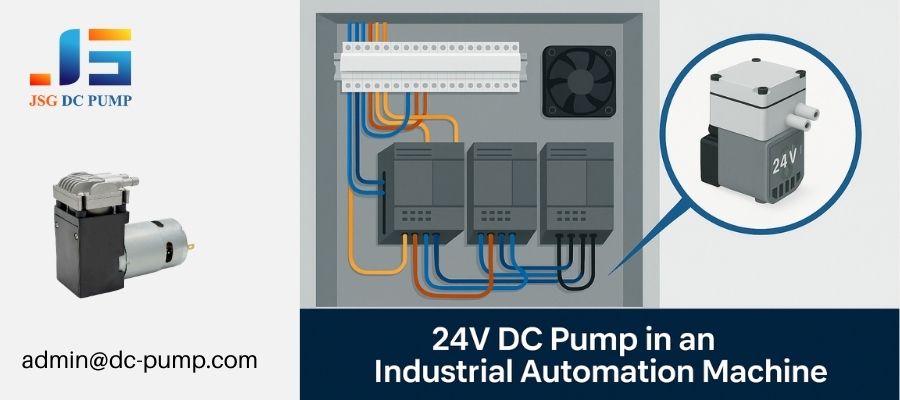
In professional and industrial settings, 24V DC has become the gold standard for control systems, and for good reason. The efficiency gains are significant, especially in complex machinery with long cable runs. Since 24V systems draw half the current, you can use thinner, lighter, and cheaper wires. This also means less energy is wasted as heat, which improves the overall reliability and lifespan of surrounding electronics.
A power supply unit (PSU) converting AC to 24V DC is also often more efficient than one converting to 12V DC. If you are not constrained by an existing 12V power source like a car battery, choosing 24V is almost always the superior technical decision for stationary equipment that demands high performance and reliability.
Can You Mix and Match Voltages with Power Converters?
Your system is designed for 24V, but a specific pump you need is only available in 12V. You wonder if using a simple DC-DC converter is a viable solution.
Yes, you can use a DC-DC “buck” converter to power a 12V pump from a 24V source. However, this adds complexity, cost, and another potential point of failure to your system.
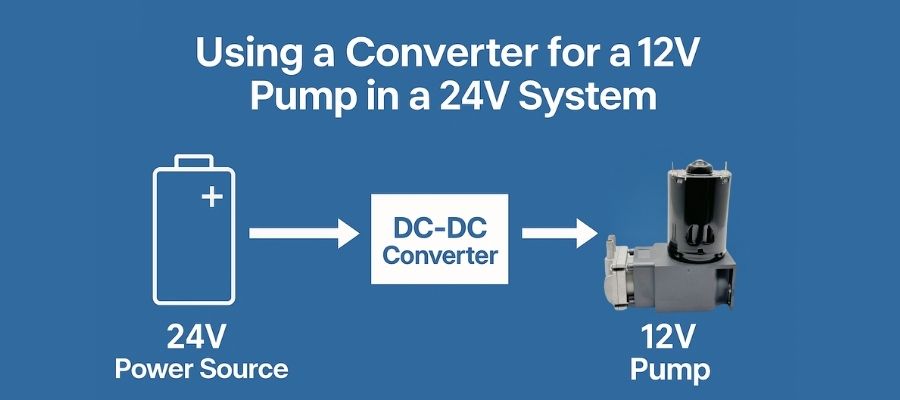
As an engineer, my first recommendation is always to use a pump with a native voltage that matches your system. It’s the simplest, most reliable, and most efficient solution. However, sometimes design constraints force your hand. If you must use a converter, be aware of the trade-offs. The converter itself is not 100% efficient; it will generate some heat and consume a small amount of power.
This introduces a small efficiency loss into your otherwise efficient 24V system. It also adds another component that you must source, mount, and wire, and which could potentially fail. While it’s a workable solution in a pinch, it’s not ideal. The best practice is always to design your system around a single, consistent voltage.
Does Voltage Affect the Pump’s Lifespan or Performance?
You want to ensure you’re getting the best performance and longest life from your pump. Does choosing 24V over 12V inherently make the pump itself better or last longer?
No, for two pumps from the same model line, the voltage does not directly affect the mechanical lifespan or performance. A 12V and 24V pump with the same power rating will have identical pressure, flow, and lifetime.
This is a crucial point of clarification. At JSG DC PUMP, when we design a pump model like our JSD-07 series, JSD-04 series,the mechanical components—the diaphragm, piston, bearings, and valve system—are identical between the 12V and 24V versions. The only difference is inside the electric motor. The 24V motor is wound with more turns of a thinner copper wire to achieve the same magnetic force with less current.
The performance and mechanical lifespan are identical. The decision between 12V and 24V is an electrical system design choice. You are choosing the most efficient way to deliver power to the pump, not choosing a “better” pump. Select the pump that meets your performance needs first, then choose the voltage that fits your system.
Answering Your Top Questions About 12V 24v dc air pump System Integration?
You have specific questions about how to integrate a pump into your larger system. Getting these details right is critical for a safe, reliable, and successful product.
Key integration issues involve power supply sizing, PWM control, and voltage mismatch. Always oversize your PSU by 25-30% to handle inrush current, and never connect a pump to the wrong voltage or wire two pumps in series.
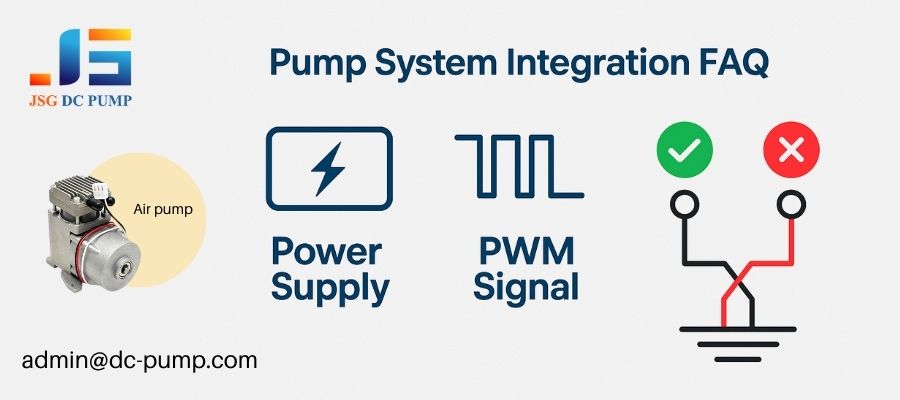
Let’s tackle the five most common integration questions I get from system designers.
1. How do I size my power supply?
A motor draws a large “inrush current” for a fraction of a second when it starts. You must size your power supply to handle this. A good rule of thumb is to choose a power supply with a wattage rating 25-30% higher than the pump’s rated power. For a 24-watt pump, use a power supply of 30 watts or more. This provides the necessary headroom for startup and ensures stable operation.
2. Can I use PWM to control the speed of both 12V and 24V pumps?
Yes. Pulse Width Modulation (PWM) is an excellent way to control the speed of our brushless DC pumps. The method works equally well for both 12V and 24V models. As long as your PWM controller circuit is rated for your system’s voltage, you can precisely manage the pump’s output.
3. Can I run two 12V pumps in series on a 24V supply?
No, this is a very bad idea. Unlike simple resistors, two motors will never share the voltage equally because their loads will differ slightly. The motor with less load will spin faster, creating back-EMF that increases its effective resistance. This will force more voltage onto the other motor, causing it to be over-voltaged while the first one is under-voltaged. One will fail prematurely. Always wire pumps in parallel, each to the correct voltage source.
4. What happens if I connect a 12V pump to a 24V power supply?
You will destroy the pump motor, likely within seconds. Supplying double the rated voltage causes a massive current surge that will overheat and burn out the motor’s copper windings. This is an irreversible failure.
5. What happens if I connect a 24V pump to a 12V supply?
It won’t damage the pump, but it will not perform as specified. The pump is receiving only half of its required voltage, so it will lack the power to operate correctly. It will either run very slowly with extremely low pressure and flow, or it will stall and fail to start at all.
Conclusion
Choose 12V for portability and automotive systems; choose 24V for efficiency in stationary equipment. The pump’s performance remains identical, but the right voltage optimizes your entire electrical system for reliability, safety, and cost-effectiveness.
👉 Looking for the right solution? JSG DC PUMP provides high-performance DC air pumps tailored to your application.
📩 Contact us: admin@dc-pump.com


